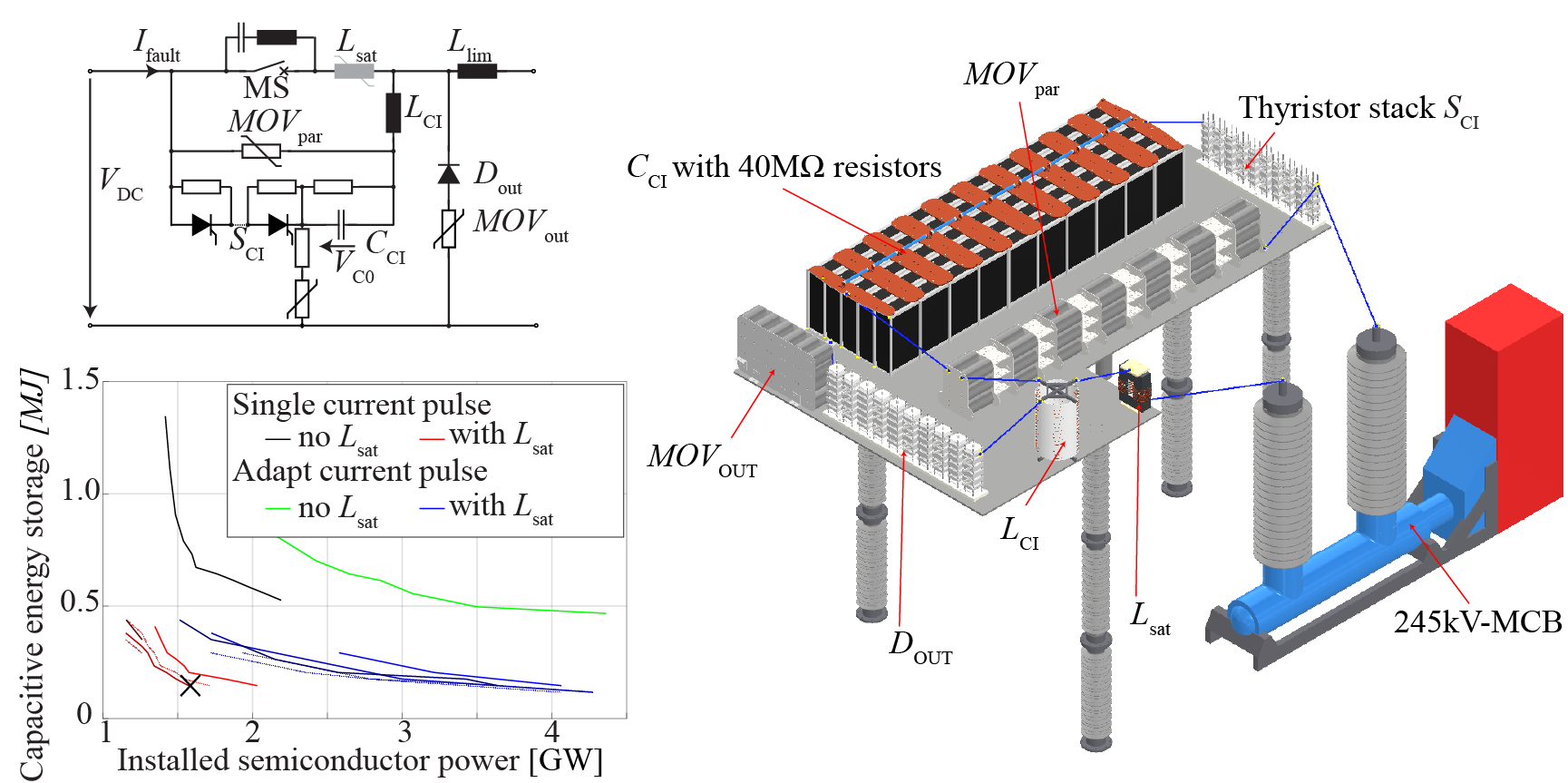Hybrid HV-DC Circuit Breaker based on SF6-MCB
In recent years, HVDC transmission gained increased interest due to the need for offshore and long-distance energy transmission with low losses. In addition, VSC enable a power reversal without the need of a voltage reversal, which is a first step to a meshed multi-terminal DC grid with low losses. A key requirement in such a DC-grid is the ability to interrupt rapidly fault currents and disconnect faulty parts of the grid. Since classical AC-CB cannot be used due to the lack of a natural zero current crossing, new DC circuit breaker (DC-CB) are developed.

The challenge is to find fast and reliable ways to interrupt fault currents with relatively low costs.
In this project, different existing DC-CB topologies have been designed, optimized, and compared for a 400kV bipolar DC grid with fault currents up to 12kA. Their strengths and shortcomings have been analysed and new optimization procedures have been developed, which especially focus on the properties and limitations of mechanical switches. A new DC-CB topology has been developed, which focuses on the reduction of component numbers by adapting the interruption procedure to the fault current and reusing the components for multiple purposes. In addition, transient voltages, which can result in an interruption failure, have been investigated and a corresponding model and solution for the optimization has been developed to improve the reliability of DC-CBs. In addition, new methods for reducing the fault current to zero have been investigated, which result in a higher performance and lower component numbers. These findings have been used to design a DC-CB for a bipolar 200kV grid, which can interrupt a fault current of up to 10.6kA.